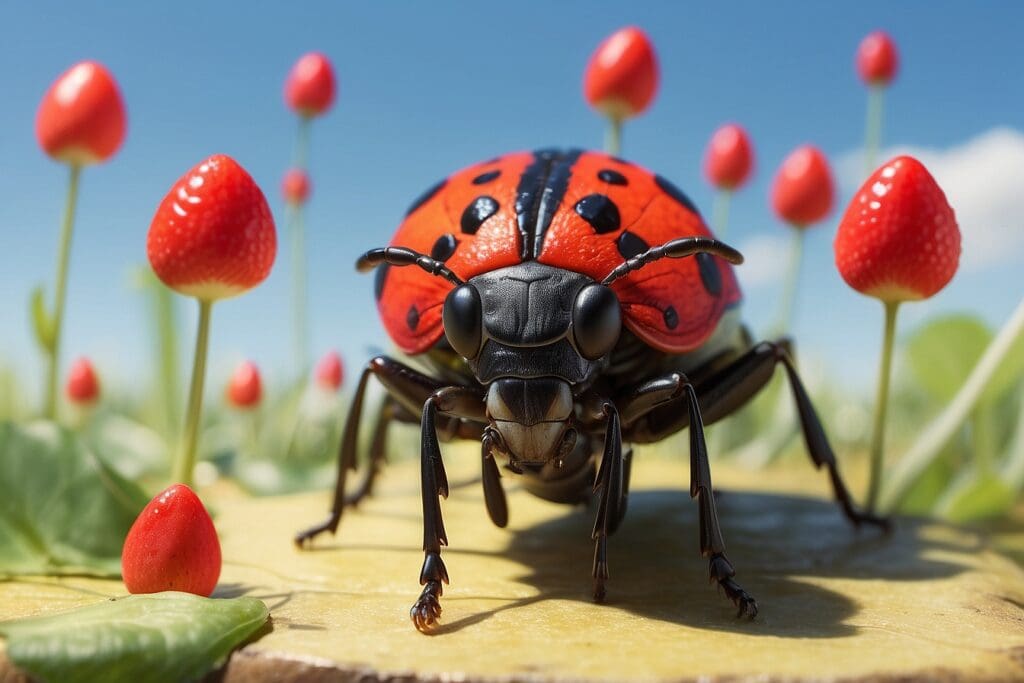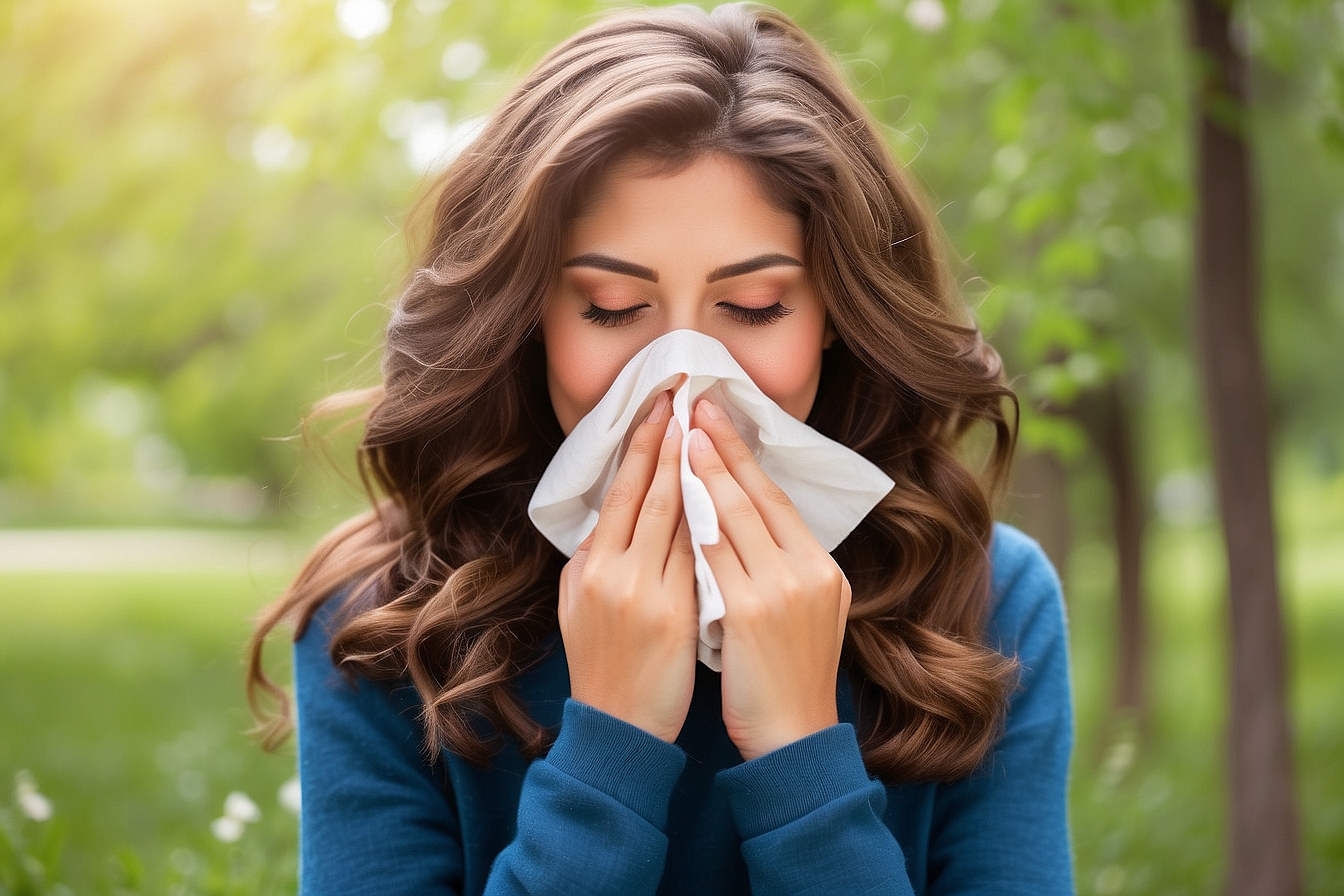We all hate getting bug bites, in fact, they can drive you nuts with itching and scratching! Warm weather inevitably brings insects – yet are conventional insect repellents the safest way to protect ourselves from these sometimes disease-carrying organisms ![]() ? Let’s take a look at preventing bug bites and whether we should be using or avoiding conventional insect repellants.
? Let’s take a look at preventing bug bites and whether we should be using or avoiding conventional insect repellants.
History of Insect Repellents
 ihroughout history, humans have used various substances – smoke, plant extracts, mud – to ward off insects. Native Americans, for example, often burned sagewort, while past Solomon Islands inhabitants burned coconuts and papaya leaves. In ancient Rome, it was custom to apply vinegar to the head and feet to repel insects, as well as to burn oregano and black cumin.1
ihroughout history, humans have used various substances – smoke, plant extracts, mud – to ward off insects. Native Americans, for example, often burned sagewort, while past Solomon Islands inhabitants burned coconuts and papaya leaves. In ancient Rome, it was custom to apply vinegar to the head and feet to repel insects, as well as to burn oregano and black cumin.1
Citronella oil, which is an extract from an Asian grass called citronella, was the first active ingredient discovered and then used in mosquito repellents. The oil’s effectiveness was accidentally discovered in 1901 when it was being used as a hair fragrance. However, large amounts of citronella oil are needed to be effective because the oil evaporates quickly. Citronella oil is also volatile. These characteristics led researchers to look for alternative options. The United States military was especially interested in creating an effective, synthetic insect repellent.2 In 1929, dimethyl phthalate was created, in 1937 indalone was created, and in 1939 Rutgers 612 was created.3 However, none of these proved to be ideal for widespread use.
The U.S. military’s search for an effective repellent also raised the issue of a portable way for soldiers to carry the repellent. In 1943, U.S. Department of Agriculture researchers Lyle Goodhue and William Sullivan developed a small aerosol can, which was pressurized by a liquefied gas.4 Researchers created the synthetic active ingredient DEET in 1955, which is still the most widely used active ingredient in mosquito repellents.5
How does Insect Repellent Work?
Mosquitoes use chemical receptors, known as a homing system, on their antennae to follow lactic acid emissions to the source. Lactic acid evaporates naturally from the skin of warm-blooded animals, such as humans. Therefore, Mosquitoes are able to track humans because of our lactic acid emissions. However, when a repellent with a chemical such as DEET is applied to the skin, the DEET will also evaporate from the skin and will prevent the lactic acid from binding to Mosquitoes’ chemical receptors. While the evaporation of the DEET is key to its success, it is also the reason why you must reapply insect repellent for it to remain effective.6
The active ingredient, such as DEET, is the ingredient that truly makes a repellent effective; however, it typically only comprises 5-30% of the repellent product.7 David Andrews, a senior scientist at the Environmental Working Group, explained:
More important than brand name for repellents is the active ingredient and the concentration used in the product… Many people, like I was, are probably unaware that using a higher concentration repellent is not better and more effective but provides longer protection time.8
Additional ingredients in the repellent can include citronella oil, dimethyl phthalate, lavender, lemongrass oil, and peppermint oil. Repellents in the form of skin cream are often less effective because the active ingredient cannot as easily evaporate.9
Conventional Insect Repellent Advantages
In many parts of the United States, people do not have to worry too much about tropical mosquito-carrying diseases ![]() , such as Dengue fever and malaria, will be able to travel further north. If you live in any of the aforementioned states, or are travelling abroad to tropical climates, using insect repellents with an active synthetic ingredient, such as DEET, may be worth the potential health risks.10 Check out the “Safe Application Tips” below for other ways you can protect yourself from insects.
, such as Dengue fever and malaria, will be able to travel further north. If you live in any of the aforementioned states, or are travelling abroad to tropical climates, using insect repellents with an active synthetic ingredient, such as DEET, may be worth the potential health risks.10 Check out the “Safe Application Tips” below for other ways you can protect yourself from insects.
Conventional Insect Repellent Disadvantages
The U.S. Environmental Protection Agency (EPA) designated DEET to Category III, which is considered “slightly toxic” and the second lowest of the four EPA designated categories for pesticides ![]() . The EPA made this placement based on the assumption that occasional use or “limited use pattern” will not present any dangers to human health. 11 However, if you live in a location that is plagued by disease-carrying Mosquitoes and must use DEET daily, there are health and environmental side effects to consider. “We think that DEET and other chemical-based repellents should be used only if other, safer methods don’t work for you,” said Urvashi Rangan, director of Consumer Reports’ Food Safety and Sustainability Center.12 Using DEET products incorrectly can potentially lead to skin irritation, disorientation, dizziness, or in some cases seizures or death. Beyond Pesticides, a non-profit organization dedicated to protecting public and environmental health, composed a list of DEET health and environmental risks:13
. The EPA made this placement based on the assumption that occasional use or “limited use pattern” will not present any dangers to human health. 11 However, if you live in a location that is plagued by disease-carrying Mosquitoes and must use DEET daily, there are health and environmental side effects to consider. “We think that DEET and other chemical-based repellents should be used only if other, safer methods don’t work for you,” said Urvashi Rangan, director of Consumer Reports’ Food Safety and Sustainability Center.12 Using DEET products incorrectly can potentially lead to skin irritation, disorientation, dizziness, or in some cases seizures or death. Beyond Pesticides, a non-profit organization dedicated to protecting public and environmental health, composed a list of DEET health and environmental risks:13
| DEET HEALTH RISKS | |
| Cancer | Not documented |
| Endocrine Disruption | Not documented |
| Reproductive Effects | Not documented |
| Neurotoxicity | Yes |
| Kidney and/or Liver Damage | Yes |
| Sensitizer/Irritant | Yes |
| Birth and/or Developmental Defects | Yes |
| DEET ENVIRONMENTAL RISKS | |
| Detected in Groundwater | Yes |
| Potential Leacher | Yes |
| Toxic to Birds | Not documented |
| Toxic to Aquatic Organisms | Not documented |
| Toxic to Bees | Not documented |
Safe Application Tips: 14
- Do not use DEET products on children younger than two months old.
- Apply DEET products to children; do not let them apply the product themselves.
- Do not use products that contain more than 30% DEET. These products will not be more effective, but they will be more toxic .
- Avoid sunscreen products containing DEET because you have to apply sunscreen more often than repellent.
- Do not use DEET spray or aerosol products because it is hard to avoid inhaling the product.
- Wash DEET product off when you go back inside or at the end of the day.
- Do not apply repellents to skin underneath clothes, or to cuts, wounds, or irritated skin.
- Always check yourself for ticks after being outside.
- If you live in a place with disease-carrying Mosquitoes, use mosquito netting over beds and infant carriers and install window screens.
- If you live in a place with disease-carrying mosquitoes, stay indoors during dawn and dusk because those are the times of day when Mosquitoes are most active.
- To avoid being bitten, wear lightweight long-sleeved shirts and pants in a light-colored fabric. Mosquitoes are drawn to dark colors and ticks will be easier to spot on light-colored fabric.
- To keep as little skin exposed as possible, tuck your shirt into the waist of your pants and tuck your pants into your socks.





